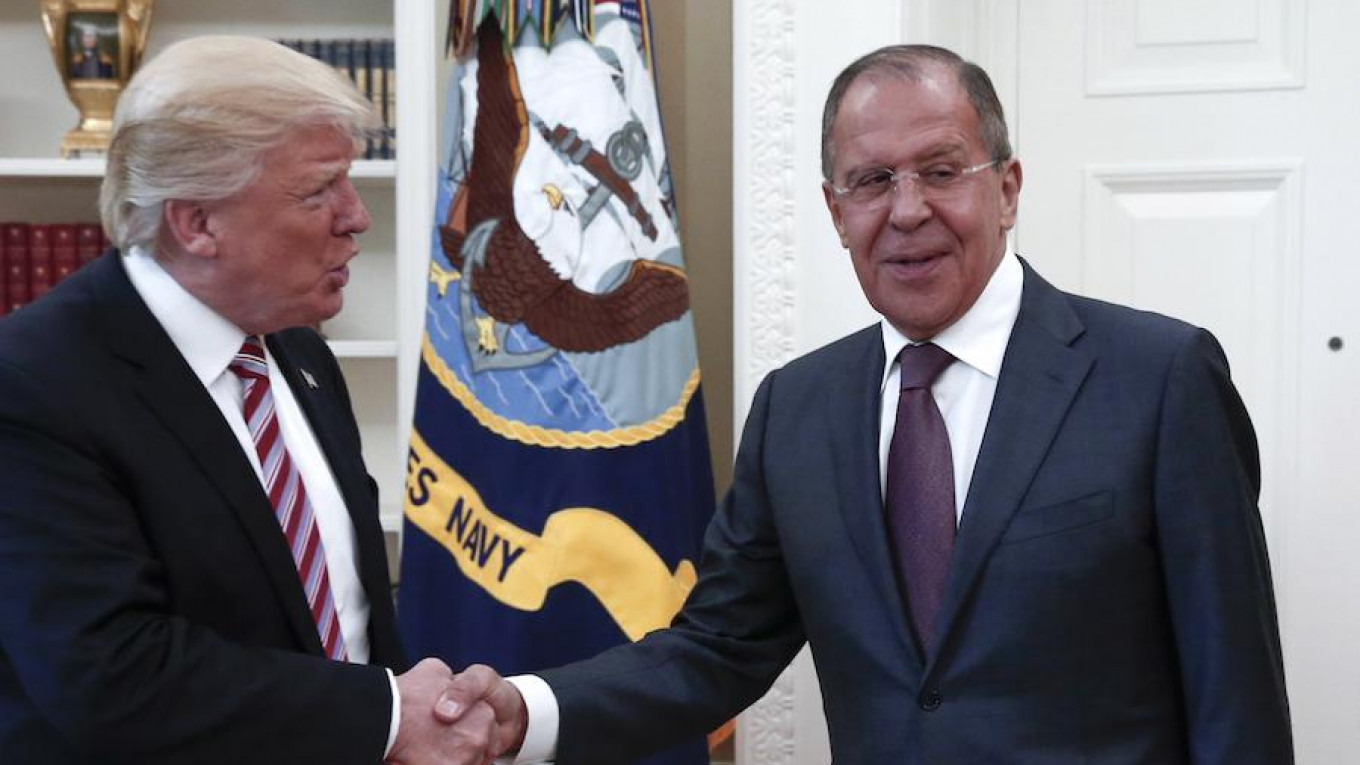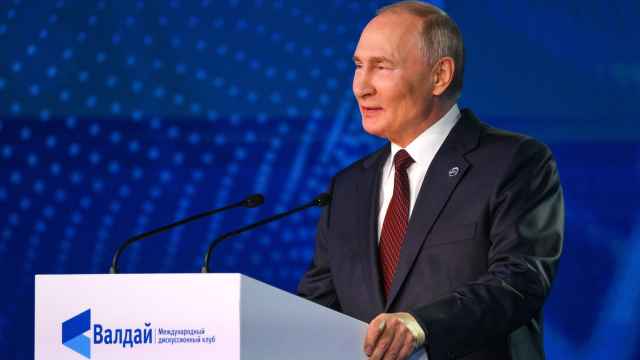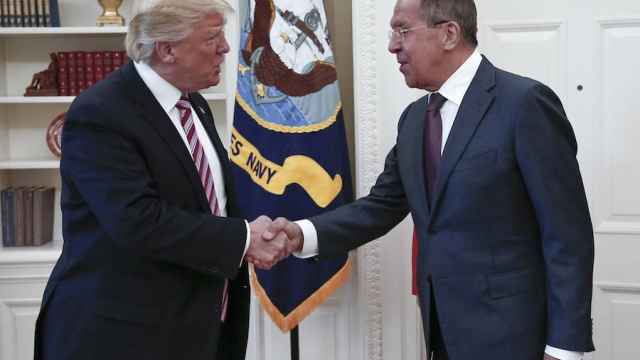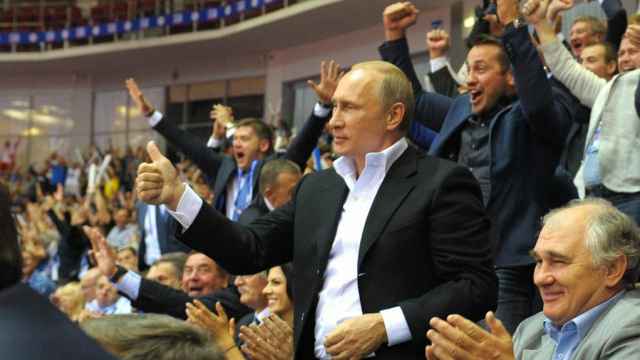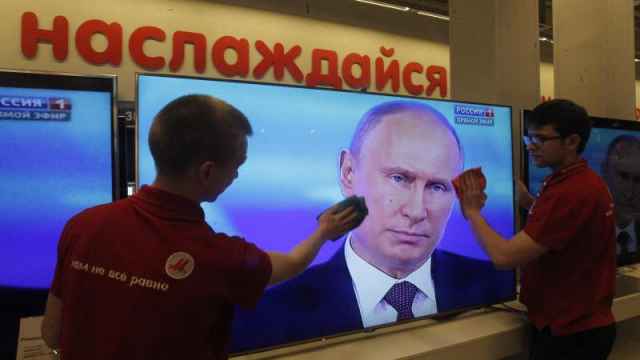“What is it about Sergey V. Lavrov that always makes high-ranking American officials look hapless?”
The New York Times posed this question on Thursday, after Russia’s state-owned TASS news agency published photos of the Russian foreign minister’s meeting with President Donald Trump in the Oval Office.
With no American press on hand (and the White House apparently oblivious that TASS and the Foreign Ministry would publish the photos), the incident has escalated into a full-blown diplomatic scandal.
In recent years, ties between Washington and Moscow have been complicated, to put it mildly. But the answer to the Times’ question is simple: The TASS photographer sparked a diplomatic crisis that shows neither side knows what it’s doing.
The blunder began with Trump’s decision to receive Lavrov (on Putin’s request) at the White House — something the Obama administration intentionally avoided. But this meeting should not have been a major scandal in and of itself.
After all, the United States and Russia have serious issues to discuss, like Syria and the ongoing conflict in Ukraine. Moreover, Vladimir Putin had met with Secretary of State Rex Tillerson in the Kremlin a month earlier.
What exacerbated the situation was the Russian Foreign Ministry’s decision to bring a photographer. The White House barred the American press from the meeting, as it was intended to be held in private, with no photos released.
If the Foreign Ministry insisted on publishing the photos, it could have waited a bit to avoid a major incident. After all, just the day before before the meeting, Trump fired his FBI director — possibly for investigating Trump’s alleged Russia ties.
But the Russians didn’t wait. And the timing of the release could not have been worse. Trump’s firing of FBI Director James Comey reignited the so-called Russiagate scandal in Washington, and the U.S. media was already looking for blood.
The photos, which show Trump smiling together with Lavrov and the figure at the heart of the Russiagate scandal, Russian Ambassador Sergey Kislyak, served no purpose other than to antagonize Trump and further harm relations.
The U.S. media interpreted the presence of a TASS reporter in the Oval Office in the worst possible way, even debating the fantastic possibility that the photojournalist may have bugged the White House.
It was inevitable, then, that the Trump administration would also be outraged by Russia’s release of the photos. Soon, an administration statement asserted that the Russians promised no photos, and even said “they are liars.”
In an apparent attempt to distance himself from Russia, Trump met with Ukrainian Foreign Minister Pavlo Klimkin in the Oval Office on Thursday and promised that the U.S. would work to end the conflict in Ukraine peacefully.
The meeting with Klimkin — which was, by contrast, highly publicized — underlined Russia’s spectacular failure in managing its own meeting. Moscow has infuriated the very people they hoped to get along with: Trump’s Russia team.
White House officials in the past two days have told American newspapers that the Russians tricked them. Russian Foreign Ministry spokeswoman Maria Zakharova, used to getting the last word, retaliated.
“I can’t believe I am writing this: American press is infuriated by the release of the official photo-shoot,” Zakharova wrote on her Facebook page.
Zakharova insisted that the photographer’s name was shared with the U.S. side in advance and the American side did not ask to keep the photos private.
The full story is, apparently, a little deeper than that: The White House staffers did not agree on protocol for the meeting, and they were unaware that the Foreign Ministry’s official photographer also works for TASS.
It is hardly news that the Trump team’s lack of professional experience often puts the White House in a difficult position. But any experienced diplomat would have abstained from releasing the photos — especially after the U.S. side granted Russia a similar courtesy when Tillerson visited the Kremlin in April.
“This is basic,” says Vladimir Frolov, a Russian foreign affairs expert. “They should have adopted a type of mirror protocol in Washington.”
The result was Russia shooting itself in the foot. Moscow is trying to arrange a meeting between Putin and Trump before a summit of the G20 club of nations in July.
What was once a growing sense of promise for a reset of U.S.-Russia relations has now given way to familiar frustration, says Alexander Baunov of the Carnegie Endowment for International Peace.
“They released these photos to show things were working out,” Baunov says. “They are used to demonstrating victory, even at the expense of the goal they are working to reach.”
The incident recalls a scandal with Iran last summer. Moscow’s deep desire to bluster saw the Iranians kick Russia out of an Iranian airbase when the Defense Ministry publicized an airstrike launched from the base.
“It was showing off,” Iranian Defense Minister Hossein Dekhgan angrily remarked after deciding to end his military’s hosting of Russian aircraft at the airbase.
The photo release’s consequences are less dire than losing access to an airbase, but the scandal follows the same logic, Baunov says. “Of course they should have agreed on whether to release the photos.”
Although the incident will deepen tensions between Moscow and Washington, it is hardly a game changer. But broadly speaking, it reflects the challenge Russian diplomacy is facing: Although theoretically nimble (one man can decide the policy), it is often extremely heavy footed.
This week was no exception. Russia wanted to advertise its victory: Finally, Lavrov was in the Oval Office again. But this braggadocio works better in confrontation, when every new scandal adds to the sense of victory, than in diplomacy. Ultimately, the photo scandal was an avoidable blunder.
A Message from The Moscow Times:
Dear readers,
We are facing unprecedented challenges. Russia's Prosecutor General's Office has designated The Moscow Times as an "undesirable" organization, criminalizing our work and putting our staff at risk of prosecution. This follows our earlier unjust labeling as a "foreign agent."
These actions are direct attempts to silence independent journalism in Russia. The authorities claim our work "discredits the decisions of the Russian leadership." We see things differently: we strive to provide accurate, unbiased reporting on Russia.
We, the journalists of The Moscow Times, refuse to be silenced. But to continue our work, we need your help.
Your support, no matter how small, makes a world of difference. If you can, please support us monthly starting from just $2. It's quick to set up, and every contribution makes a significant impact.
By supporting The Moscow Times, you're defending open, independent journalism in the face of repression. Thank you for standing with us.
Remind me later.



